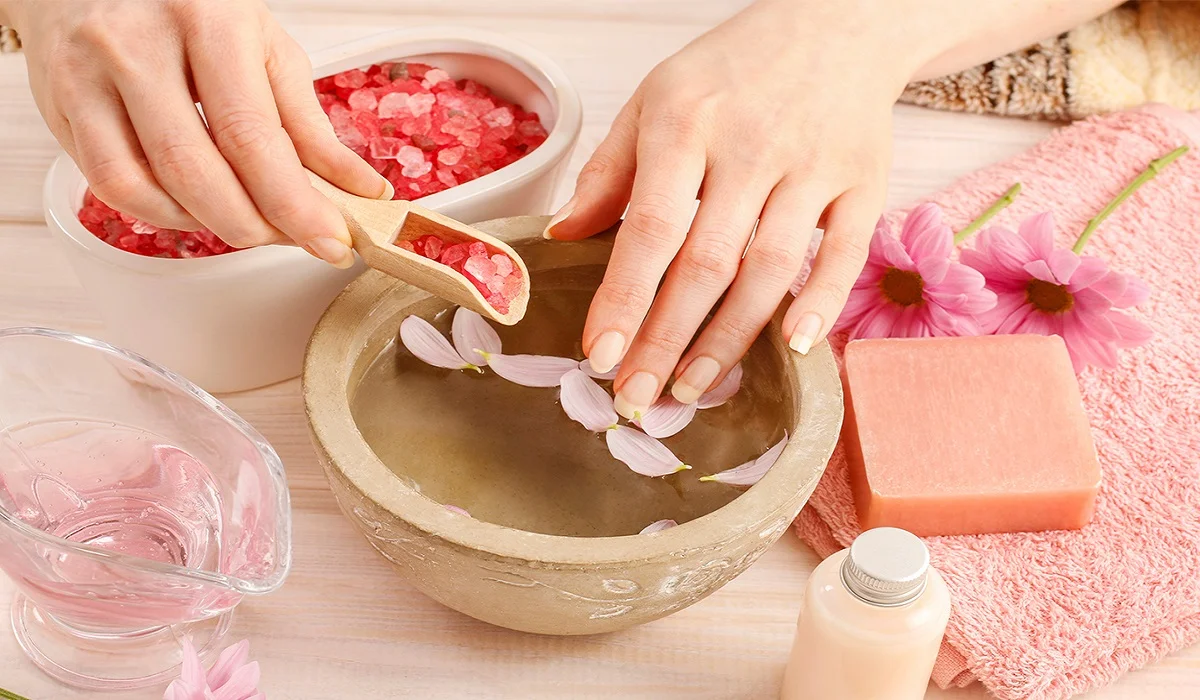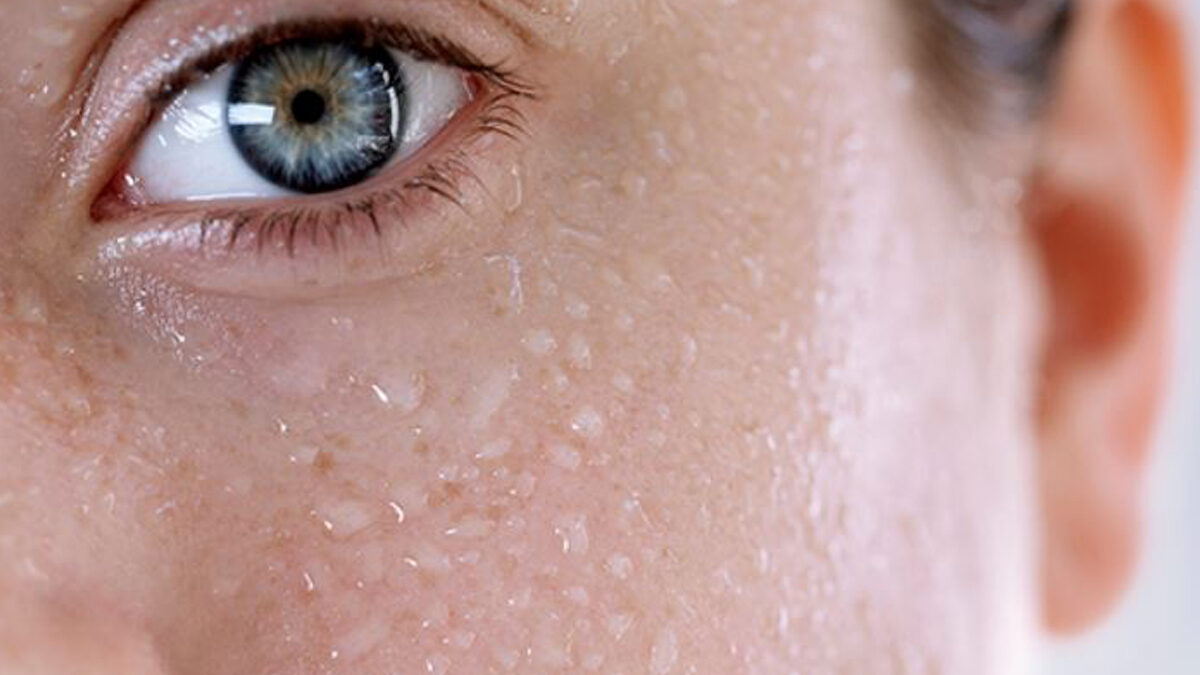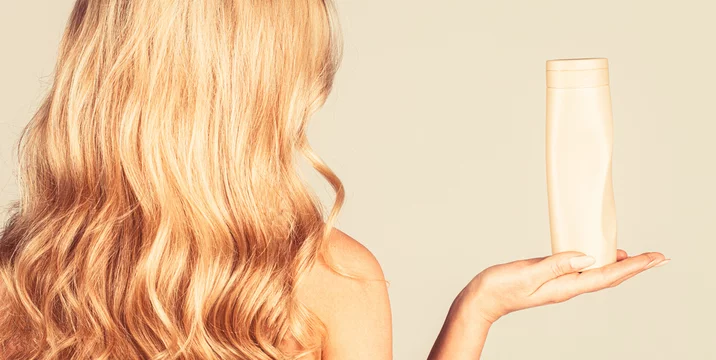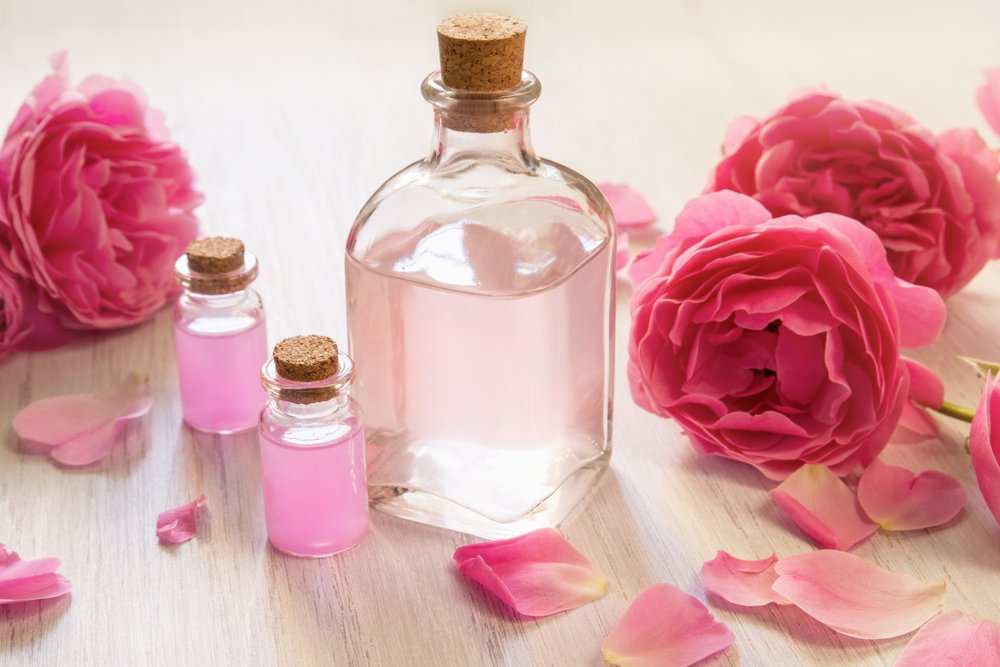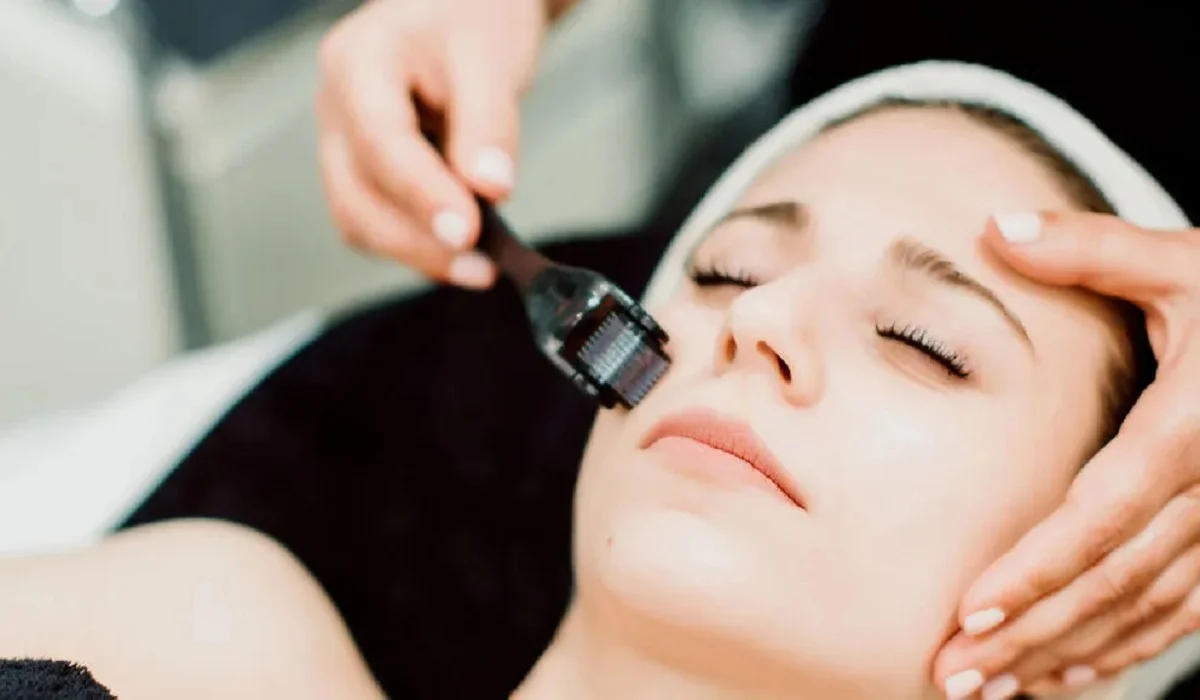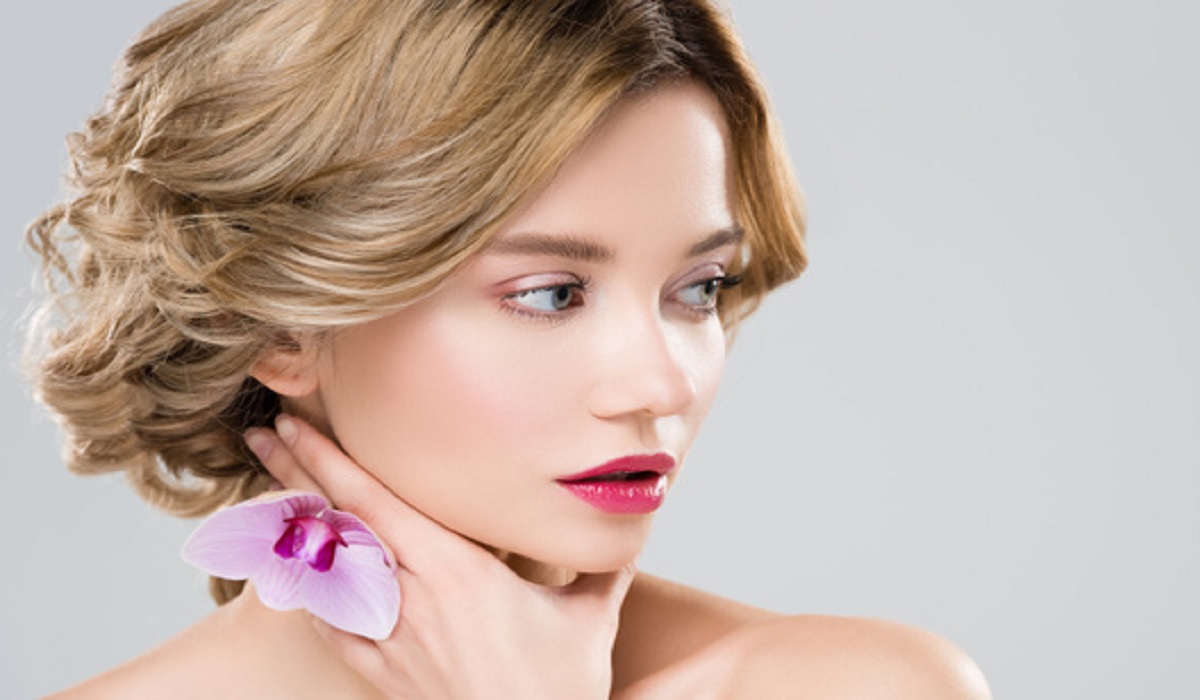Setting powder is the unsung hero of a flawless makeup look, acting as the final touch that locks your foundation and concealer in place, providing a smooth, long-lasting finish. But despite its importance, many find the process of applying setting powder correctly a bit of a mystery. This guide demystifies the art of setting powder application, ensuring your makeup stays put from morning until night, without the dreaded cakey appearance.
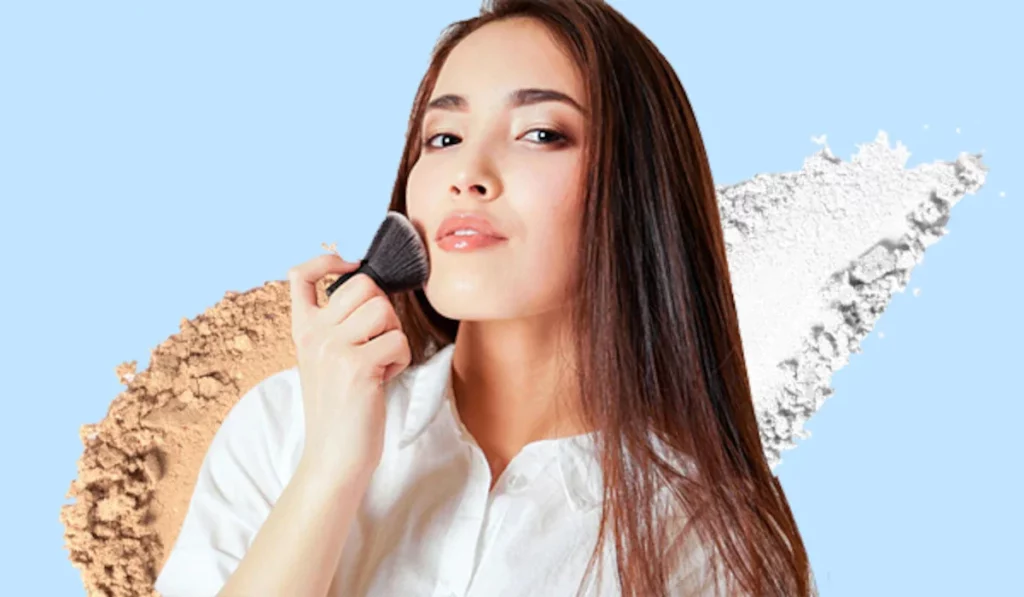
The Purpose of Setting Powder
Setting powder plays a pivotal role in your makeup regimen. It’s not just about mattifying; it’s about creating a seamless canvas that enhances the longevity of your makeup. Whether you’re battling oiliness or looking for that perfect photo finish, setting powder can transform your look. Different skin types will benefit from setting powder in unique ways, from locking in moisture for dry skin to controlling shine for oily complexions.
Types of Setting Powder
Choosing the right setting powder can be as crucial as the application itself. Loose powders offer a lightweight, buildable coverage ideal for a natural look, while pressed powders provide convenience and precision for touch-ups on the go. The debate between translucent and colored setting powders boils down to your desired finish and skin tone match.
Preparing Your Skin for Setting Powder
A flawless finish starts with well-prepared skin. Hydrating your skin is essential to prevent the powder from clinging to dry patches, while a good primer sets the stage for smooth application. Understanding how to create the perfect base is the first step toward mastering setting powder.
The Right Tools for Application
The tools you choose for applying setting powder can make a significant difference. Brushes offer a light, airy finish, ideal for a natural look, whereas sponges provide precision and denser coverage. Selecting the right tool depends on your personal preference and the specific needs of your skin.
Step-by-Step Guide to Applying Setting Powder
Achieving a seamless finish with setting powder is all about technique. From ensuring even distribution to mastering the art of layering, this section will guide you through each step, offering tips to avoid common application mistakes.
How to Apply Setting Powder the Right Way
Tailoring your setting powder application to your skin’s needs is crucial for a flawless finish. Whether you’re aiming for full coverage or a light dusting, understanding how to adjust your technique is key.
Setting Your Under-Eye Area
The under-eye area requires special attention due to its delicate nature. This section will explore techniques to prevent creasing and ensure your concealer stays put without settling into fine lines.
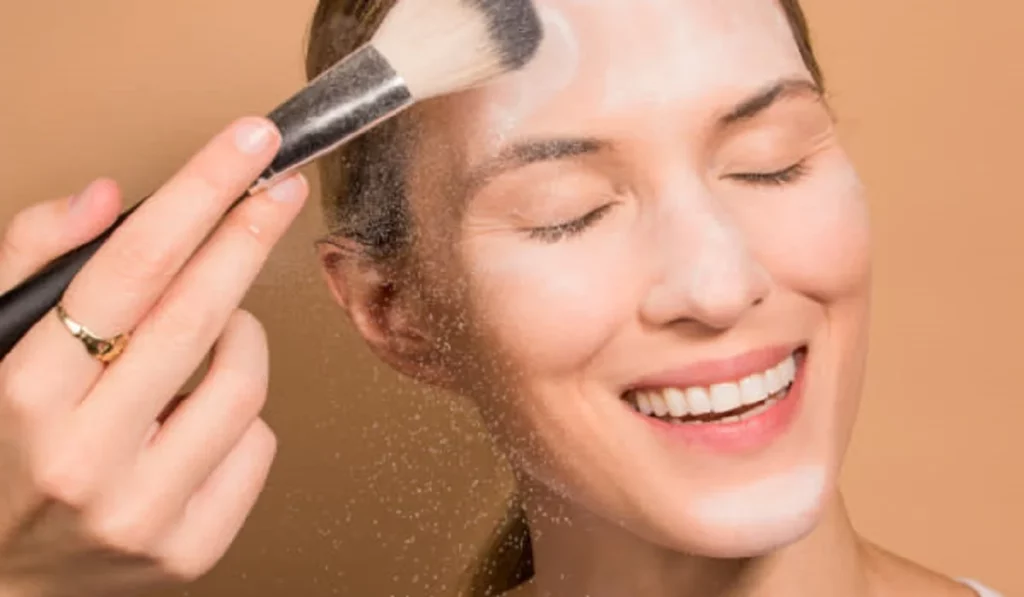
Long-Lasting Makeup: Setting Powder’s Role
Discover how setting powder can extend the wear of your makeup, keeping it looking fresh and perfect throughout the day. From combating oiliness to ensuring your foundation doesn’t budge, setting powder is your ally in achieving enduring beauty.
The Dos and Don’ts of Setting Powder
Navigating the dos and don’ts of setting powder can help you avoid common pitfalls and achieve a more natural, radiant look. This section will arm you with best practices and what to avoid for optimal results.
Troubleshooting Common Setting Powder Issues
Even with the best intentions, sometimes things go awry. Over-powdering, patchiness, and uneven texture are just a few issues that can emerge. Here, we’ll tackle how to remedy these common challenges, ensuring your makeup looks impeccable.
Mastering the application of setting powder is a skill that elevates your makeup game to new heights, ensuring a flawless finish that lasts. By paying attention to the type of powder, preparing your skin properly, and applying with the right tools and techniques, you can achieve a seamless, long-lasting look. Remember, the key to perfection is practice and patience, allowing you to unlock the full potential of setting powder in your beauty routine.
- How do I choose the right setting powder for my skin type? Selecting the right setting powder begins with understanding your skin type. For oily skin, look for a mattifying, oil-absorbing powder to control shine throughout the day. If you have dry skin, opt for a hydrating or mineral-based setting powder that won’t accentuate dry patches. Those with sensitive skin should consider finely milled, fragrance-free powders to minimize irritation.
- Can setting powder be used without foundation? Absolutely! Setting powder can be applied on bare skin or over a primer to reduce shine and even out the skin tone. This approach is perfect for those seeking a light, natural look or wanting to minimize oiliness without the added weight of foundation.
- How can I prevent my setting powder from looking cakey? To avoid a cakey appearance, start with a well-moisturized face and apply a primer. Use a light hand when applying the powder, focusing on areas that tend to get oily. It’s also crucial to choose a powder that matches your skin type and tone. If you find the powder settling into fine lines or looking heavy, lightly mist your face with a setting spray to melt the powder into the skin, creating a more natural finish.
- Is there a difference between setting powder and finishing powder? Yes, there is a difference. Setting powder is primarily used to lock in foundation and concealer, reducing shine and extending the wear of your makeup. Finishing powder, on the other hand, is applied after setting powder and is designed to blur imperfections, provide a smooth texture, and often impart a specific finish, such as matte or radiant.
- How often should I reapply setting powder throughout the day? The need for reapplication depends on your skin type and the environment you’re in. Those with oily skin may find the need to blot and reapply once or twice during the day to control shine. However, to maintain a natural look and avoid buildup, it’s best to blot away excess oil with blotting paper before reapplying a minimal amount of powder only to the areas that need it.
- Can setting powder be used under the eyes? Yes, setting powder can be used under the eyes to set concealer and prevent it from creasing throughout the day. Opt for a lightweight, translucent powder, and apply it with a small, fluffy brush to ensure a light, even distribution. Be sure to tap off any excess powder before application to avoid a heavy, cakey look.
- How do I choose between translucent and tinted setting powder? Translucent setting powder is universal and suitable for all skin tones, offering a natural finish without adding color. It’s ideal for setting makeup without altering the color of your foundation or concealer. Tinted setting powder, however, provides additional coverage and can be used to match or enhance your skin tone. Choose tinted powder if you’re looking for extra coverage or to correct color imbalances in your complexion.

